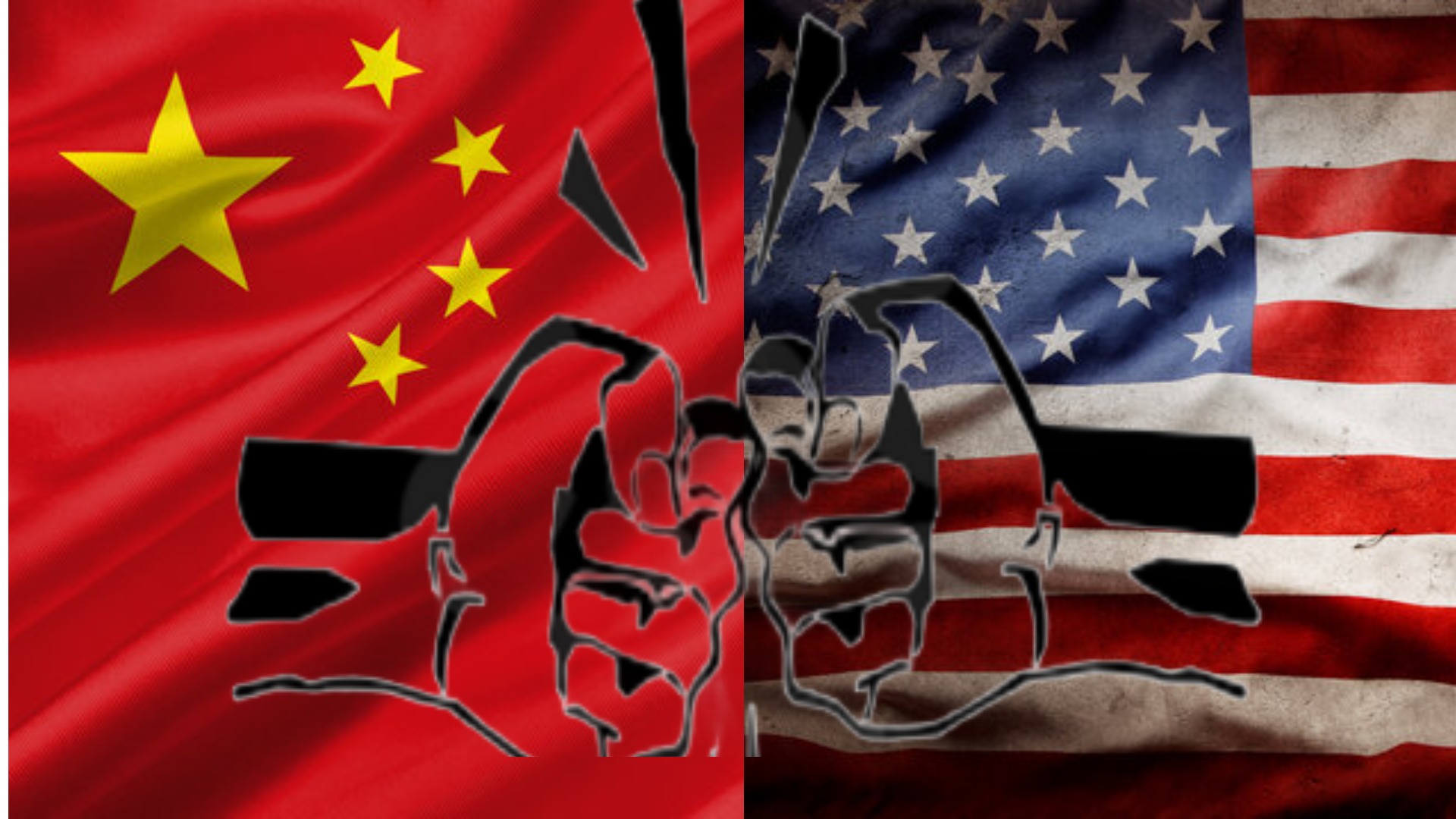The trade relationship between the U.S.-China, the two largest economies in the world, has historically been one of mutual benefit, despite underlying tensions. Both nations have leveraged this relationship to grow their economies and expand their global influence. However, in recent years, this relationship has deteriorated significantly, leading to what many describe as a trade war. Initiated primarily by the United States under the Trump administration in 2018, this trade war was sparked by issues such as intellectual property theft, trade imbalances, and China’s state-controlled economic model. The conflict has impacted not only the economies of both countries but also the global economy, supply chains, and international trade relations.
This report explores the origins and causes of the U.S.-China trade conflict, key areas of contention, the implications for global trade and geopolitics, and the potential future of this critical relationship.
Origins of the Trade War: Key Factors
1. Intellectual Property and Technology Theft
One of the primary drivers of the trade war is the United States’ claim that China engages in intellectual property theft on a massive scale. According to U.S. officials and businesses, China has used various tactics to gain access to sensitive U.S. technology, including forced technology transfers—a practice where U.S. companies are required to share technology with Chinese partners as a condition of doing business in the country. These practices, according to the U.S., give China an unfair competitive edge, especially in industries like semiconductors, aerospace, and biotechnology.
In response, the U.S. has imposed severe restrictions on Chinese companies, particularly in the technology sector. The Trump administration took aggressive measures, including banning Chinese telecommunications giant Huawei from purchasing U.S. technology and pressuring allied countries to avoid using Huawei’s 5G infrastructure, citing national security concerns. The U.S. alleged that Huawei had close ties to the Chinese government and that its technology could be used for espionage.
This conflict over technology and intellectual property theft remains a critical issue between the two nations, as China views technological advancement as central to its rise as a global superpower. This is exemplified by China’s Made in China 2025 strategy, which aims to dominate high-tech industries by 2025.
2. Trade Imbalance
Another major factor contributing to the trade war is the large and persistent trade imbalance between the U.S. and China. The United States has consistently run a significant trade deficit with China, meaning it imports far more goods from China than it exports to the country. In 2018, this trade deficit reached a staggering $375 billion.
President Trump used this trade imbalance to justify imposing tariffs on hundreds of billions of dollars’ worth of Chinese goods, arguing that the deficit was a sign of unfair trade practices. The tariffs were meant to reduce the U.S. deficit by making Chinese goods more expensive in the U.S. market, thereby encouraging consumers to buy more American-made products. However, China responded by imposing retaliatory tariffs on American goods, particularly targeting agricultural products like soybeans, which hurt U.S. farmers and escalated tensions further.
3. China’s State-Owned Enterprises (SOEs)
A further point of contention between the U.S. and China is China’s use of state-owned enterprises (SOEs), which play a dominant role in its economy. The U.S. has accused China of giving its SOEs unfair advantages, such as government subsidies, which distort global competition and violate the principles of free-market capitalism. The U.S. argues that these subsidies allow Chinese companies to sell products at artificially low prices, undercutting American and other foreign companies.
Moreover, China’s SOEs are seen as tools of the government, wielding economic influence in ways that align with the Chinese Communist Party’s political objectives. This dynamic creates tensions not only in trade but also in broader geopolitical areas, as China uses its SOEs to extend its influence across Africa, Asia, and Latin America through initiatives like the Belt and Road Initiative (BRI).
4. Tariff Wars and Escalation
The tariff war began in 2018 when the U.S. imposed tariffs on Chinese goods as part of a broader strategy to pressure China into changing its trade practices. The U.S. initially placed tariffs on $50 billion worth of Chinese imports, which included machinery, electronics, and other industrial goods. China quickly retaliated with tariffs on American products, including automobiles and agricultural goods, leading to a back-and-forth escalation.
By the end of 2019, both countries had imposed tariffs on hundreds of billions of dollars’ worth of each other’s goods. This trade war has had wide-ranging effects on businesses and consumers, leading to higher prices for goods, disruptions in supply chains, and increased economic uncertainty.
Recent Tensions and Key Issues
1. Technological Rivalry and the Huawei Ban
Technological competition has become one of the defining features of the U.S.-China trade conflict. The U.S. government’s targeting of Huawei and other Chinese tech companies exemplifies this. Washington’s concerns are rooted in the belief that Chinese companies, particularly those in the tech sector, serve as instruments of the Chinese state, facilitating espionage and undermining U.S. technological supremacy.
In 2019, the U.S. Department of Commerce placed Huawei on a trade blacklist, preventing the company from buying key technologies from U.S. firms without government approval. This action severely impacted Huawei’s ability to produce smartphones and network infrastructure equipment. The U.S. also pressured allied countries to ban Huawei’s 5G technology from their telecommunications networks, further straining relations with China.
Technological rivalry extends beyond Huawei. The U.S. has imposed export controls on other Chinese firms in sectors like artificial intelligence, semiconductors, and quantum computing, aiming to curb China’s ambitions in these cutting-edge industries.
2. The Trump Administration’s Tough Trade Policies
Under President Donald Trump, the U.S. adopted an aggressive stance toward China, marking a significant shift in the country’s trade policy. Trump frequently accused China of “unfair trade practices” and currency manipulation, arguing that these practices harmed U.S. workers and industries.
The Trump administration also sought to decouple the U.S. economy from China’s, aiming to reduce dependence on Chinese goods and manufacturing. This led to a wave of tariffs and export restrictions, which further soured relations between the two countries. Despite criticism from economists and businesses, Trump maintained that these measures were necessary to protect American jobs and industries.
3. The Biden Administration’s Continuation and New Approach
Although President Joe Biden took office in 2021 with promises of a more diplomatic and multilateral approach to international trade, his administration has largely continued the hardline stance on China. Key tariffs and trade restrictions put in place during the Trump era have remained in effect. The Biden administration has focused on rebuilding alliances with other democracies to form a united front against China’s growing influence, particularly in areas like technology, climate change, and human rights.
While Biden has sought to engage China on issues like climate cooperation, his administration has not backed down on pressing China over issues such as forced labor in Xinjiang, Hong Kong’s autonomy, and China’s actions in the South China Sea. This combination of confrontation and selective cooperation marks the U.S.’s evolving approach to its relationship with China.
Global Impact of U.S.-China Trade Tensions
1. Disruptions in Global Supply Chains
The trade war between the U.S. and China has had significant ramifications for global supply chains, particularly in industries reliant on Chinese manufacturing, such as electronics, automobiles, and consumer goods. With tariffs in place and trade restrictions tightening, many companies have had to either absorb higher costs or pass them on to consumers, resulting in price hikes across the board.
In addition, multinational corporations have been forced to reevaluate their supply chains, shifting production away from China to other countries like Vietnam, India, and Mexico in order to avoid tariffs and reduce reliance on Chinese manufacturing. This reorganization of global supply chains has created a more fragmented global trade environment, as companies seek to mitigate risks associated with the U.S.-China conflict.
2. Impact on Asia and Emerging Economies
Beyond the U.S. and China, the trade tensions have significantly impacted other countries, particularly those in Asia. Taiwan, South Korea, Japan, and Vietnam have all experienced disruptions as a result of the tariffs and trade restrictions. These nations rely heavily on both the U.S. and Chinese markets for their exports, especially in high-tech industries and consumer electronics.
Additionally, the trade war has opened up new opportunities for emerging markets in Southeast Asia and Latin America, as companies look for alternative manufacturing hubs. Countries like India, Thailand, and Mexico have benefited from companies relocating production away from China, boosting their manufacturing sectors.
3. Shifts in Global Investment
The prolonged trade war has led to shifts in global investment patterns. Many multinational companies have reduced their investments in China and moved their operations to other countries to mitigate the risks posed by tariffs and regulatory uncertainty. This shift has led to increased foreign direct investment (FDI) in countries like Vietnam, Malaysia, and Mexico, which are now seen as attractive alternatives to China.
Moreover, the ongoing technological rivalry between the U.S. and China has prompted both countries to ramp up domestic investments in emerging technologies like 5G, artificial intelligence (AI), and semiconductors. This trend has resulted in a competitive race for technological supremacy, with both the U.S. and China investing heavily in R&D and innovation.
4. Challenges to Global Trade Governance
The U.S.-China trade war has exposed weaknesses in global trade governance, particularly within the World Trade Organization (WTO). Both the U.S. and China have accused each other of violating WTO rules, leading to a breakdown in dispute resolution mechanisms. This has raised concerns about the future effectiveness of the WTO in managing trade conflicts between major global powers.
The broader impact of the trade war has also led to increased skepticism about the benefits of free trade. Protectionist measures, such as tariffs and import restrictions, have become more common as countries seek to protect their domestic industries from foreign competition. This shift has created uncertainty about the future of global trade liberalization and multilateral trade agreements.
The Future of U.S.-China Trade Relations
The future of U.S.-China trade relations remains uncertain, as both countries continue to pursue divergent economic strategies. On one hand, the U.S. is increasingly focused on reshoring manufacturing and reducing its dependence on China, while on the other hand, China is seeking to expand its influence in global trade and technology through initiatives like Belt and Road.
At the same time, there are areas of potential cooperation between the two nations, particularly in addressing global challenges like climate change, pandemic response, and energy security. However, deep-seated geopolitical tensions, particularly over issues such as Taiwan, Hong Kong, and human rights, make it unlikely that relations will normalize in the near future.
The recent tensions between the U.S. and China represent one of the most significant shifts in global trade dynamics in recent history. The trade war, fueled by disputes over intellectual property, trade imbalances, and state-controlled industries, has had far-reaching consequences for both countries and the global economy. The impact has been felt in disrupted supply chains, investment shifts, and challenges to international trade governance.
As the world watches, the actions of the U.S. and China will continue to shape the future of global trade, with far-reaching implications for businesses, governments, and international institutions alike. While cooperation in some areas may provide a path forward, the broader geopolitical rivalry between these two superpowers is likely to persist for the foreseeable future, ensuring that the U.S.-China trade relationship will remain a critical issue on the world stage.

 A.B.M. Abir
A.B.M. Abir 
























